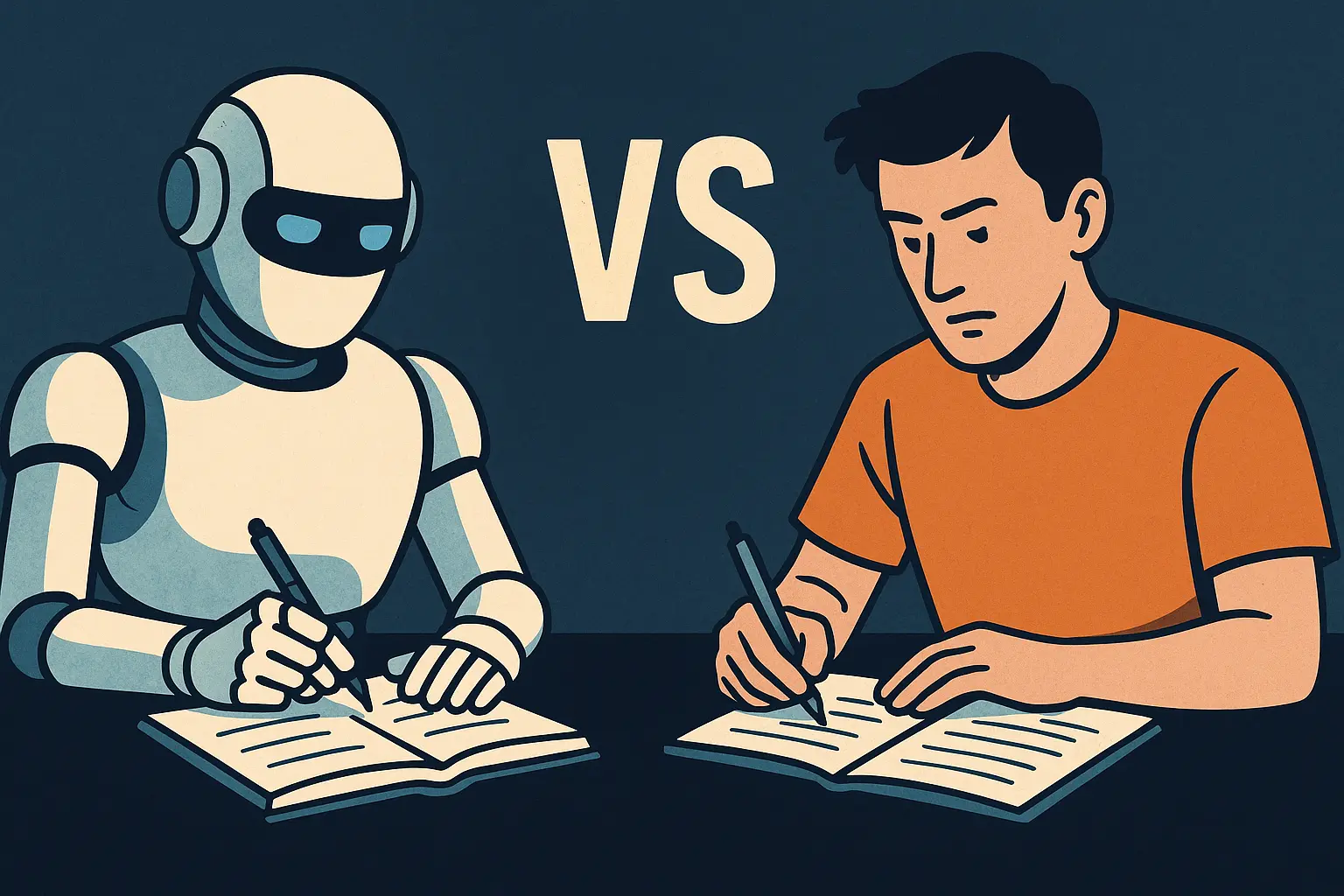Discover the real flaws in AI writing and how to fix them. Learn proven strategies to write better with AI, avoid common mistakes, and create high-quality content that stands out.
🧠 Table of Contents
- Introduction: The Rise of AI Writing
- The 5 Hidden Faults of AI Writing
- 🔍 Real Case Studies: When AI Writing Fails
- 😓 The Emotional Cost of AI-Only Content
- 🛠️ How to Fix AI Writing (Step-by-Step Guide)
- 🤝 When to Use AI, When to Write Yourself
- 🧪 Hybrid Strategy: Human + AI Examples That Work
- 📚 Tools, Templates & Resources
- Final Thoughts: Embracing the Human Touch
1. 🚀 Introduction: The Rise of AI Writing
In less than two years, AI has gone from a novelty to a necessity. From students to CEOs, everyone is now using tools like ChatGPT, Jasper, and Writesonic to speed up writing tasks. Blog posts, product descriptions, newsletters — all can be written in seconds.
But faster doesn't mean better. Behind the convenience lies a risk: the loss of authenticity, quality, and even credibility.
In this post, we’ll not only break down the common problems with AI writing, but also teach you how to fix them — and even make AI your secret writing partner.
2. ⚠️ The 5 Hidden Faults of AI Writing
1. It Ignores Search Intent
AI often answers a query without understanding the purpose behind it. Readers want answers, not introductions.
Example: Query: "How to install WordPress on cPanel" AI output:
“WordPress is a content management system used by millions…”
❌ Misses the point. ✅ What’s better: A direct step-by-step list with screenshots and tooltips.
2. It Lacks Personal Experience
AI doesn’t know what it’s like to run a business, travel with kids, or lose a client. So its writing can feel robotic or overly general.
✅ EEAT-compliant content (Google’s Experience, Expertise, Authority, and Trust) requires your story.
3. It Repeats and Fluffs
AI loves to say things like:
“In today’s fast-paced world…” “This is a great way to…”
These don’t add value and can harm your SEO. Google's algorithms can detect thin, boilerplate content — and rank it lower.
4. It “Hallucinates” Facts
AI models are trained on probability, not facts. That means they often invent information that sounds right but isn’t.
Example:
“Moz recommends keyword density of 10%.” ❌ False. Moz never said that.
5. It Forgets Your Brand Voice
Every brand has a unique tone — casual, witty, academic, etc. AI doesn't know your brand unless you teach it or heavily prompt it.
3. 📉 Real Case Studies: When AI Writing Fails
🧪 Case Study 1: Product Review That Misled Readers
An e-commerce site published a blog titled “Best Laptops for Video Editing” — all written by AI. One of the top picks was an outdated laptop no longer sold, another lacked GPU support.
🔎 Outcome:
- 32% bounce rate spike
- 8 returns from buyers misled by inaccurate claims
- Post removed after complaints
🧪 Case Study 2: AI Blog Rejected by Google AdSense
A creator submitted a blog with 40 AI-generated articles. Despite being grammatically perfect, it was rejected due to:
- Lack of depth
- No original media
- Repetitive headings
✅ Fix: Human rewrites + real examples = later approval
🧪 Case Study 3: A Personal Story Written Without Heart
An AI-generated post titled “My Journey as a Freelancer” began with:
“Freelancing is a great way to earn money in today’s world.”
There was no story, no tension, no moment of growth. Readers didn’t trust it — because it wasn’t real.
4. 💔 The Emotional Cost of AI-Only Content
Humans crave stories. Struggles. Joy. Doubt. Triumph.
When you remove emotion and real voice, here’s what you lose:
- Reader empathy
- Authentic brand tone
- Community trust
Even AI-written emails have lower click-through rates than personalized, human-crafted ones.
5. 🛠️ How to Fix AI Writing: Step-by-Step
✅ Step 1: Use AI for Structure, Not Soul
Let it:
- Outline blog posts
- Summarize a paragraph
- Suggest topic ideas
But you add the color — real stories, stats, opinions.
✅ Step 2: Run a Fluff Audit
Remove:
- “As we all know”
- “In conclusion, it is clear that…”
- Anything that doesn’t move the message forward
✅ Step 3: Check the Facts
Paste suspicious claims into Google. Add:
- Real source links
- Screenshots
- Names and data
✅ Step 4: Tune the Tone
Use prompts like:
“Rewrite this in a confident, witty voice” “Make this sound like a real travel blogger from Morocco”
You can also train custom GPTs or fine-tune models if you're scaling.
6. ⚖️ When to Use AI vs. Write It Yourself
TaskUse AI?WhyProduct descriptions✅Fast, formulaicPersonal stories/blogs❌Needs heart, nuanceSEO blog outlines✅AI can structure ideas wellLanding page hero section❌Your value prop must be sharp & realEmail subject lines✅✅A/B test with AI variations
7. 🔁 Hybrid Strategy: AI + Human Examples
Example 1: Raw AI Output
“Traveling in Europe is fun. You can see many countries and enjoy different foods.”
Human Rewrite:
“In one day, I had espresso in Milan, schnitzel in Vienna, and apple strudel by the Danube. That’s Europe by train — fast, flavorful, and unforgettable.”
🔥 See the difference?
8. 🔗 Tools, Plugins, and Resources
- Grammarly – Refine tone and clarity
- Hemingway Editor – Cut fluff
- SurferSEO – Optimize AI content for real ranking
- Quillbot – Rephrase awkward sentences
- Your brain – Still the best writing tool 😄
🎯 Final Thoughts: Human Writes Win
AI is your sidekick — not your substitute. Use it to speed up ideas, but inject your voice, your story, your expertise.
The future of content is not about choosing AI or human. It’s about creating a new standard: AI-assisted, human-approved.
